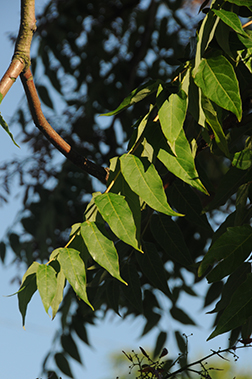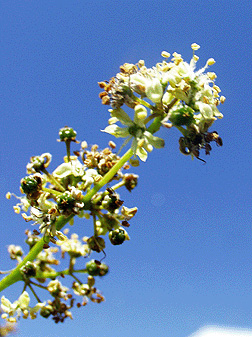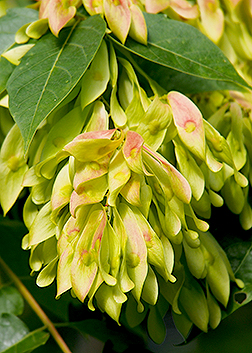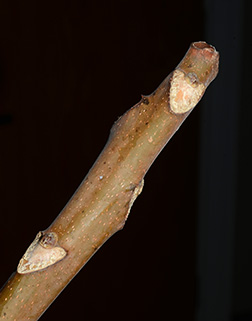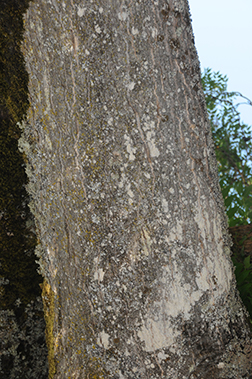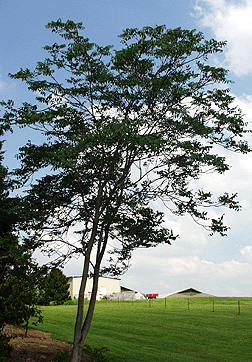 Virginia Tech Dendrology
Virginia Tech Dendrology
tree-of-Heaven Simaroubaceae Ailanthus
altissima (Mill.) Swingle
![]()
![]()
![]() symbol: AIAL
symbol: AIAL
Leaf: Alternate, pinnately compound, 1 to 3 feet long, with 11 to 41 leaflets, leaflets are 2 to 6 inches long, pointed at the tip with large, glandular teeth near the base, green above and below.
Flower: Species is dioecious; small yellow-green, in long (6 to 12 inches) clusters, males have a disagreeable odor, appearing in late spring to early summer.
Fruit: An oblong, twisted samara, 1 to 1 1/2 inches long with the seed in the center, hanging in long clusters, ripens in late summer and disperse through the winter.
Twig: Stout, yellow to red-brown, with fine velvety hairs when young, easily broken with a large reddish brown pith; buds are relatively small and half-spherical sitting above large, heart-shaped leaf scars; terminal bud is absent. Strong odor (some are reminded of peanut butter) when broken.
Bark: Thin, light brown to gray, resembles the skin of a cantaloupe when young, later turning darker gray and rough.
Form: A short to medium sized tree to 70 feet with heavy, open branches. Lower branches on larger trees tend to droop. Often grows in clumps.
Looks like: black walnut
- smooth sumac
- Kentucky coffeetree
- poison sumac
Additional Range Information: Ailanthus altissima is planted in the USDA hardiness zones shown above and may seed into the landscape. Download the full-size PDF map.
More Information: Fall Color
External Links: USDAFS Silvics of North America - USDAFS FEIS Silvics - USDA Plants Database - Horticulture Information - USDAFS Forest Products Lab
All material 2025 Virginia Tech Dept. of Forest Resources and Environmental Conservation; Photos and text by: John Seiler, Edward Jensen, Alex Niemiera, and John Peterson; Silvics reprinted from Ag Handbook 654; range map source information
